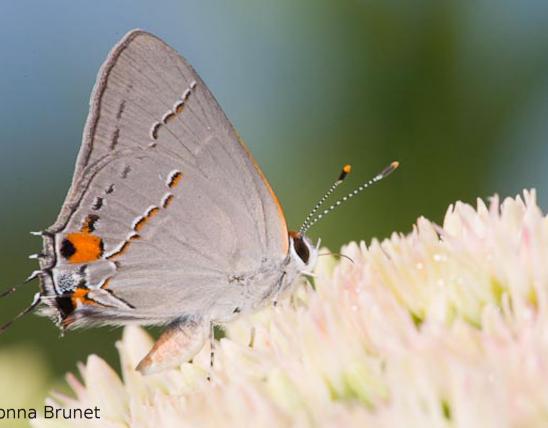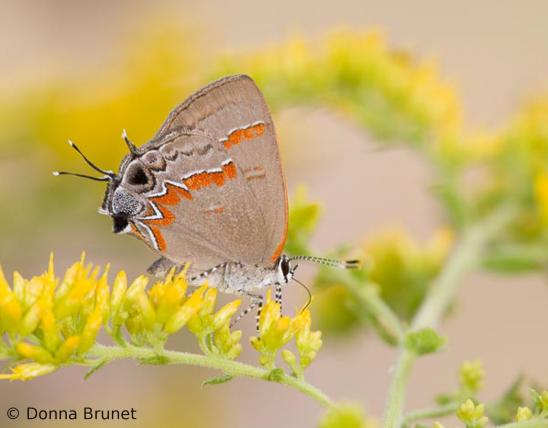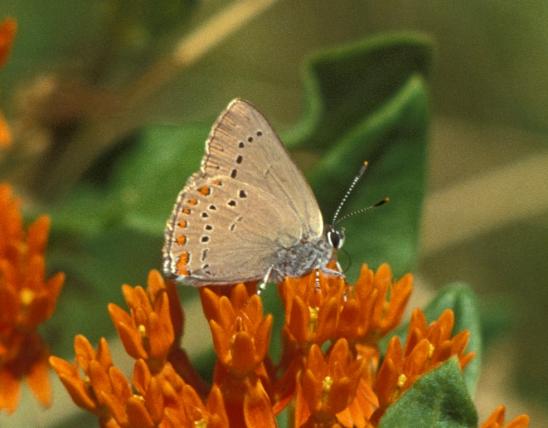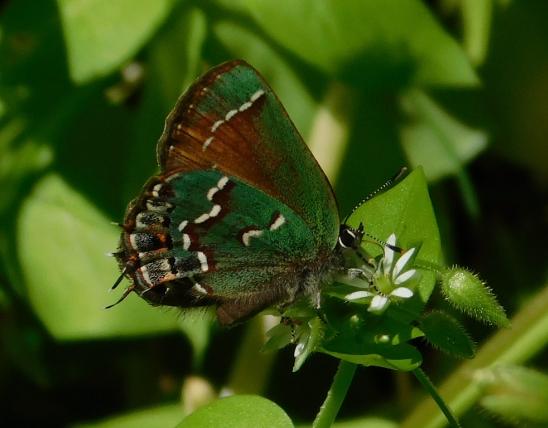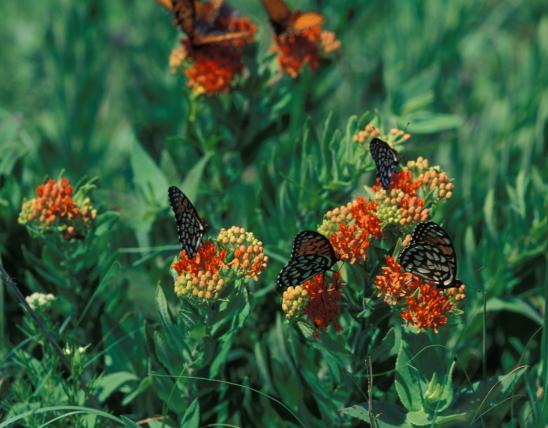
The summer azure used to be considered the same species as the very similar spring azure (C. ladon). The upper side of males is iridescent blue; upper side of females is blue with a black border. The lower side is pale gray or off-white with black spots. Both summer and spring azures lack hindwing tails and lack orange spots on the lower side.
Larvae are usually green, finely hairy, with lengthwise yellowish or lighter green stripes. Darker triangular spots occur along the sides, one on each main-body segment.
Similar species: The closely related and nearly identical spring azure flies in March through mid-May, while the summer azure flies mid-May through November. The eastern tailed-blue is another common small blue butterfly, but it has a tail on each hindwing and at least one crescent orange spot on the outer edge of the hindwing. We have several other species of blues, azures, and hairstreaks, too.
Wingspan: 1–1¼ inches.

Statewide.
Habitat and Conservation
Occurs in yards and in both open and wooded habitats.
Food
Larvae feed on the flowers of a wide variety of woody trees and shrubs, notably members of the rose family (such as spiraea), plus gray dogwood and New Jersey tea. The adults drink moisture from puddles and moist soil and nectar from flowers.
Status
Common resident species.
Life Cycle
There are three broods. Adults may only last a few days. Females deposit eggs singly on twigs on a variety of woody host plants. This species overwinters in the chrysalis stage.
Human Connections
For philosophers and poets, butterflies are a source of inspiration and of symbols. In the fourth century, Chinese philosopher Zhuangzi pondered, “I do not know whether I was then a man dreaming I was a butterfly, or whether I am now a butterfly dreaming I am a man.”
Ecosystem Connections
The caterpillars are herbivores that graze on vegetation. The adults serve a role in pollination. All stages provide food for predators. The larvae of this species are tended by ants, which reap their sugary secretions and also defend them from predators.


























